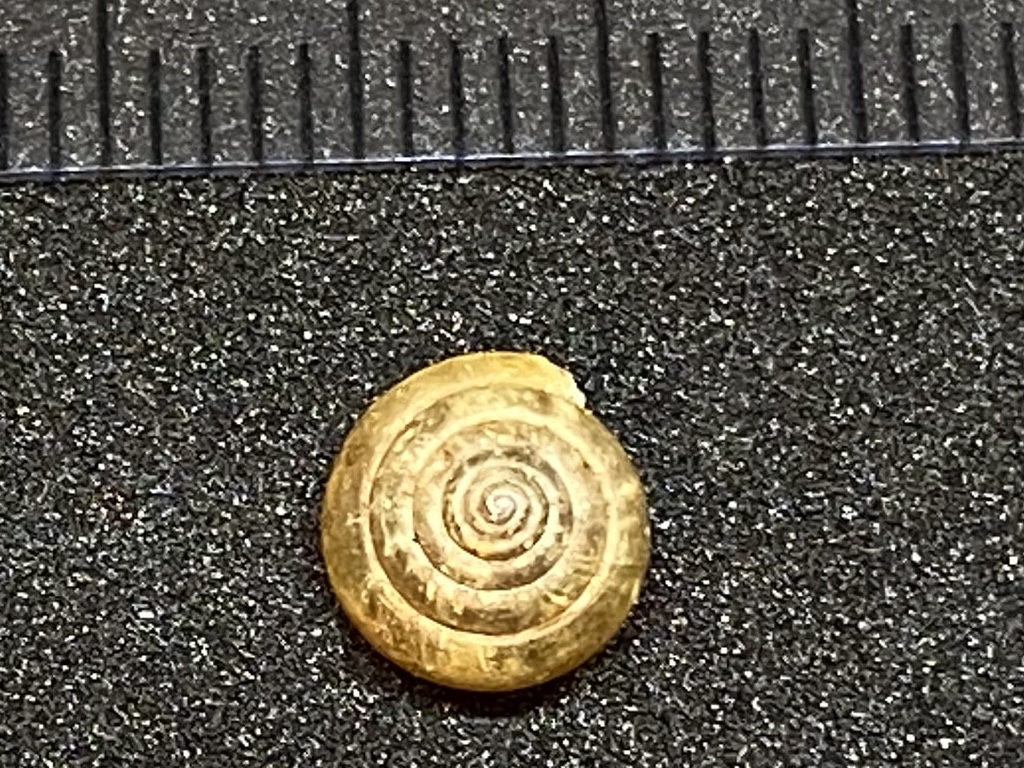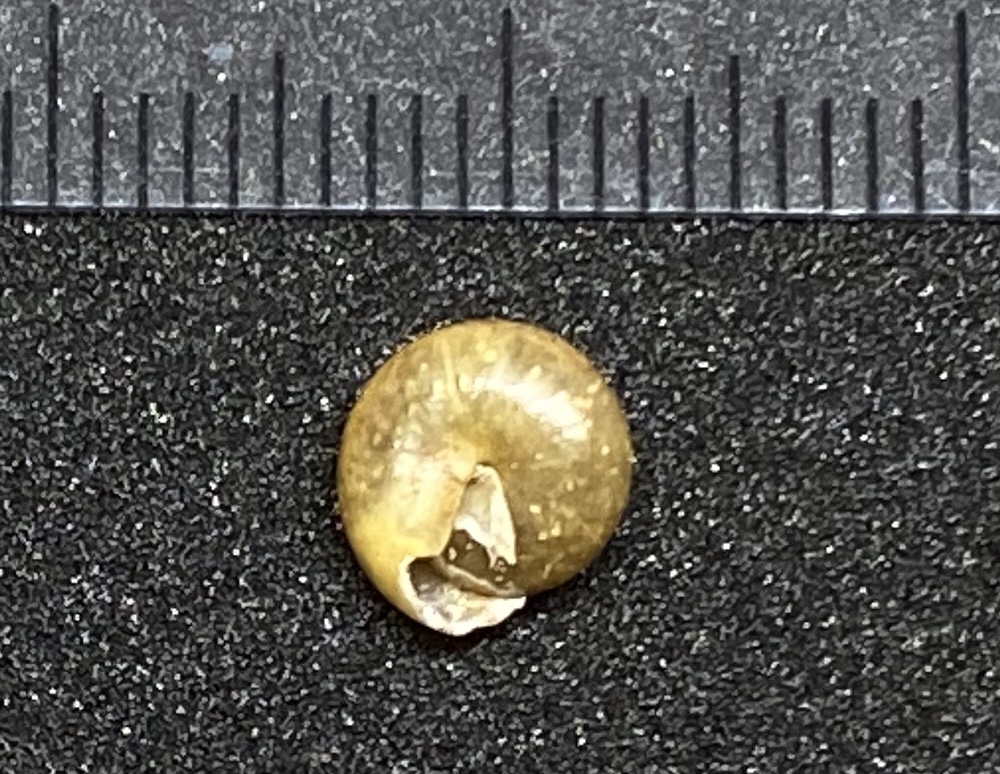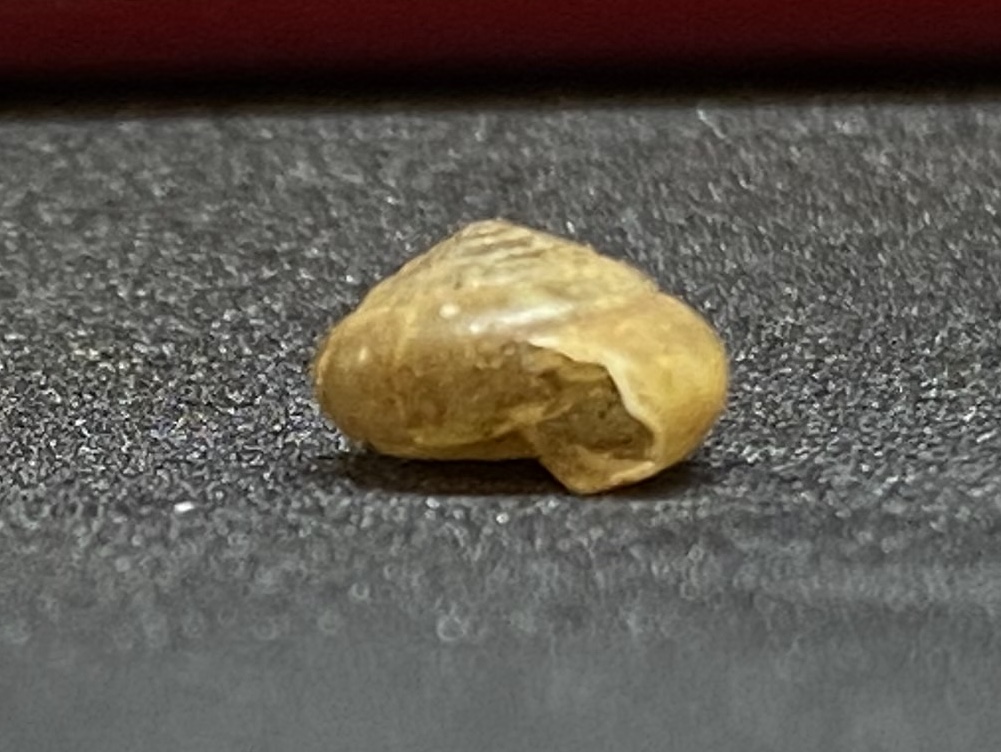BROWN BELLYTOOTH
4/24/21
After a good hard rain, a snail search turned up the usual suspects on our street, with about four Common Buttons for every White-lipped Globe. Searching the leaf litter around one of our hickories revealed an empty shell of a species I haven’t found before, a Brown Bellytooth.
Brown Bellytooth
The Brown Bellytooth (Gastrodonta interna (Say, 1822)) is small, about 6.5 mm across. The shell is pale and fairly smooth except for some curved lines on the top. The underside is glossy with a very narrow (perforate) umbilicus, and just a hint of those curved line seen on the top. What is remarkable about this shell is how many whorls there are: 6 in a shell this small compared with 5 in a shell the size of a Common Button or White-Lipped Globe. In side view, the whorls are slightly impressed, and the sides of the apex are relatively flat. All of this plus the small size suggest that this is a Gastrodonta.



Unfortunately, the shell is empty and the aperture is broken, so it is impossible to see the teeth or the shape of the aperture, which help to nail down the species. The perforate umbilicus is typical of G. interna, which is known from the southeastern United States and from wet leaf litter, matching how I found it. GBIF also reports that G. interna is the most commonly reported species of Gastrodonta in this area.
The lack of an intact aperture makes me a little hesitant about the identification. Some other species have many whorls, a small size, and a perforate umbilicus, such as Ventridens demissus. However, the spire of this specimen is flat sided, not rounded as in V. demissus. Other species of Ventridens are almost twice as large or have a large umbilicus. Only one species of Ventridens is more common in our area than Gastrodonta interna, but that species (V. intertextus) has a much more globose shell. Even so, I am not 100% sure that this isn’t a Ventridens, and that will be solved by finding more shells.